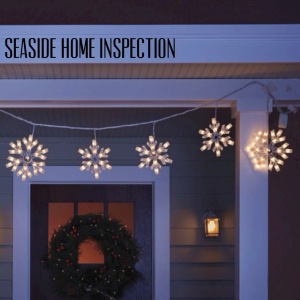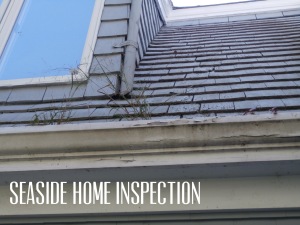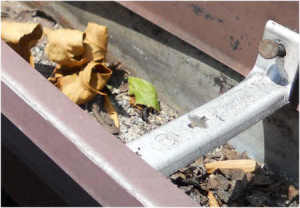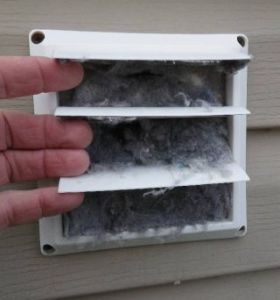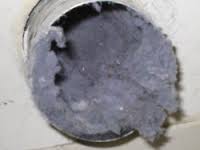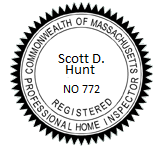When Is the Best Time to Sell Your House?

Figuring out the right time to sell can help you maximize the sale price of your home and take some stress out of the process. Here are tools and tips for deciding when is a good time – both financially and emotionally — to sell your house.
When is the best time to sell?
Nationwide, the best time to sell a home to both maximize return and minimize time on the market is in the first half of May. However, other factors can influence the best time to put your house on the market, including the specifics of your local housing market, job growth, mortgage rates, and tax incentives.
Best time of year to sell a house in your area
| Best month to sell | Best day of the week to list | Why? |
|---|---|---|
| First half of May | Saturday | Nationally, homes listed for sale in this window sold almost two weeks faster than average, and for $2,500 more, compared to average points in the year |
Although many people will tell you that the ideal time of the year to sell your home is spring, that may not be true. The best answer to “When is the best time of the year to sell?” really depends on the location of your home. The Zillow Owner Dashboard is the fastest way to learn which month is the best to list a house in your area, and estimates a home’s selling price now vs. your optimum sales month. And it’s not conventional wisdom or gut feelings — it’s an analysis of seasonal sales patterns of homes in your area, based on the month they were first listed on Zillow.
Here is the best-selling window for top real estate markets, by population:
| City | Day of the week to list | Date range to list | Average sales premium | Days sold faster than average |
|---|---|---|---|---|
| New York | Saturday | April 16-30 | $3,100 | 14 |
| Los Angeles | Thursday | May 16-31 | $8,100 | 9.5 |
| Chicago | Friday | April 16-30 | $3,000 | 18.5 |
| Dallas | Saturday | May 1-15 | $1,400 | 7.5 |
| Philadelphia | Friday | May 1-15 | $2,700 | 18 |
| Washington, DC | Thursday | May 1-15 | $5,300 | 10.5 |
| Miami | Saturday | May 1-15 | $1,900 | 15.5 |
| Atlanta | Friday | May 1-15 | $2,700 | 11.5 |
| Boston | Wednesday | May 1-15 | $6,600 | 9 |
| San Francisco | Thursday | April 16-30 | $15,300 | 6 |
Seasonality affects when to sell a house
Selling a house in the spring
As you can see from the trends above, people tend to shop for homes as the weather gets warmer, so prepping your home in the winter months to sell in spring usually makes sense. With tax refunds in their pockets, nicer weather for moving in the forecast, and summer break from the kids’ school coming up, it’s easy to see why spring is typically the most popular time to buy and sell.

Selling a house in the summer
Many of the same reasons buyers shop in the spring apply to home buying in summer as well — warm weather, school breaks, and simply having more hours of sunshine to hit up open houses and take home tours. Of course, summer is the time when most people take their vacations, so that might account for a bit of a slowdown. And, there are parts of the country where real estate is slow in the summer because it’s simply too hot to shop comfortably. Among the largest U.S. real estate markets, St. Louis has the latest prime selling window — June 1-15.
Selling a house in the fall
Many buyers shopping in the early fall may be trying to move in time to get settled before the school year picks up or before the weather gets bad, and that feeling of urgency can be a benefit to sellers. However, many off-season shoppers are moving because of a job transfer, layoff, short sale, or family issue, so they can also be more sensitive to price.
Selling a house in the winter
While winter is traditionally the slowest season for home sales, if your climate is warm year-round (think Florida and the Southwest), your window for selling may even be better in the winter months as snowbirds flock to the sunshine.
List your home for sale in the optimal housing market
Of course, seasonality isn’t the only factor to keep in mind when deciding if it’s the right time to sell your house. It’s also important to consider the state of your local housing market.
Selling in a buyers market
A buyers market occurs when the number of available properties for sale exceeds the number of people looking to buy. When inventory is high, sellers can expect their home to stay on the market longer before receiving an offer, and you may have to sell below list price or make additional concessions to the buyer. (Learn more about selling a home in a buyers market.)
Selling in a sellers market
In a sellers market, there are more potential home buyers than there are available properties. A sellers market is the ideal time to sell your home, as you can expect it to sell more quickly and you’re more likely to receive multiple offers and sell for full price (or above).

Local job growth makes it a good time to sell
If your local job market is booming, it’s a great time to sell your home, as there are likely job seekers or recent transplants eager for housing in your area.
Low mortgage rates inspire new buyers to purchase homes
For the last four years or so, mortgage rates have been historically low, but rates have started to rise lately and most economists agree that rates are going to keep creeping up as the economy strengthens. The higher the rates, the farther a buyer’s budget has to stretch to get the home they want. When rates are low, though, first-time buyers are especially apt to buy.
30-year fixed-rate mortgage rates over the last seven years:
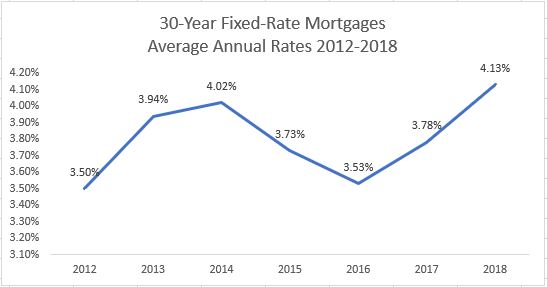
Tax incentives on purchases improve home selling odds
While there are currently no major federal tax incentives for first-time home buyers, like the popular First-Time Homebuyer Credit of 2008-2010, potential sellers should keep track of local, county, and state financial news, as incentives and tax laws can make it easier for potential buyers to take the leap and become homeowners.
Your readiness marks the best time to sell
When it comes down to it, the best time to sell is the best time for you. All kinds of personal factors can play into your decision to sell, from job changes to family changes to just generally feeling ready. Keep the following factors in mind:
- Lifestyle changes: Job changes, relocations, a growing family, and downsizing are the most common reasons people decide to sell. Job-related moves often require a stricter timeline, whereas family-related moves can sometimes be timed to take advantage of beneficial market factors.
- Emotional preparedness: No matter the reason for your move, it’s important to make sure you’re emotionally prepared. Even if you’re moving for a logical reason — for example, you’re a recent empty-nester downsizing after your kids are grown — it can be hard to let go of the memories associated with your family home. Give yourself time.
- Financial benefits: If your home has gained substantial equity, the value you’ve built may be enough to get you a healthy down payment on your dream home or give you a comfortable cushion for retirement.
What if local factors make it a bad time to sell?
If you’re in a hurry to sell but the local housing market, interest rates, or seasonality are working against you, consider selling your home with Zillow Offers. This program allows you to sell your house directly to Zillow. You’ll receive an all-cash offer on your house in just a few days and can close in as little as a week.
How long does it take to list a home?
Once you’ve decided on listing your house, it’s only natural to want just get it sold. However, there are lots of important steps that need to be taken to ensure that the process goes smoothly and you get top dollar.
Experts suggest allowing at least two months to prepare, which will give you ample time to research your local market, hire an agent you trust, clean your home thoroughly, do any minor repairs, crunch the number on your payout, take those beautiful photos, and then sit back and watch the offers roll in.
Open Houses: What Buyers Should and Shouldn’t Do
Open houses are your chance to get to know a for-sale home up close and personal, to see the reality behind listing language like “gourmet kitchen” and “giant closets.” The best part: You don’t need an appointment or even your own agent to attend an open house.
Open houses let you gauge the market in your area and let you see for yourself what $300,000 will get you.
And if you don’t already have an agent, open houses are easy way to begin a relationship with one. You’ll see how he or she markets the home, and you can ask questions.
During most open houses, you’ll be asked to sign in and provide an address and telephone number. This helps the seller’s agent to follow up with you; if you didn’t like the house, the agent may another listing that fits you better. You don’t have to sign in but it’s polite to at least introduce yourself to the agent so he or she can keep track of who’s walking through the home.
Here are some do’s and don’t that will help you make the most of open house visits.
Open house timing
Do show up at the house as early as possible, before the crowd. That way, an agent will have time to give you personal attention and answer questions.
Don’t wait until the last minute to arrive, when an agent most likely is turning off lights and packing up brochures. If you can’t make the open house with plenty of time to look around, call the agent and arrange a personal showing.
Questions to ask the agent
Do ask questions about the home. Have any offers been made? Is the seller motivated? If the price has dropped, why? How long as the property been on the market? How much are utilities? Are there any water problems? Any assessments or extra fees?
Don’t monopolize an agent with endless questions during a busy open house. You can always follow up later. And don’t be contentious or challenging; that will only shut doors of communication and make the agent less willing to share information.
Questions the agent will ask you
Do answer questions about what home features you want, price range, number of people who will live in the home, and whether you already own a home already.
Don’t provide too much information. Don’t answer questions about your income, how your search is going, and when you need to move – all information that puts you in a disadvantaged negotiating position.
Open house etiquette
Do dress appropriately in clean, casual wear. No one will throw you out of an open house if you arrive wearing Daisy Dukes and a flip flops but if you don’t look like a responsible buyer, agents are less likely to take you seriously. Also feel free to photos so you can remember details, and take measurements to make sure your furniture will fit.
Don’t open closed doors without asking the agent first, or open drawers or medicine cabinets. Also, don’t criticize the house in front of the agent; wait until you leave to talk smack about the property. And don’t make use of the bathrooms.
Scoping (not snooping)
Do check for basement dampness, foundation cracks or outdated plumbing and wiring. Walk around the property to see if water pools in any section, which could point to grading problems. Drive around the area to get a feel for the neighborhood. If you have kids, look for other youngsters they might play with. If you are empty nesters who want peace and quiet, keep an eye out for older residents.
Don’t buy a house that you think has water problems, which are hard and expensive to cure. And don’t overlook landscaping, which could include old, dead trees that may have to be taken down, which is a costly job.
Asbestos Abatement
 Although asbestos isn’t banned in the U.S., its use is limited. However, asbestos-containing materials (ACM) still pose a danger to the public because they were common building products in homes, schools and other structures built before the 1980s.
Although asbestos isn’t banned in the U.S., its use is limited. However, asbestos-containing materials (ACM) still pose a danger to the public because they were common building products in homes, schools and other structures built before the 1980s.
Asbestos abatement involves the identification, removal, repair and encapsulation of materials or products in a structure to eliminate the threat of exposure to toxic asbestos fibers. It’s best handled by a professional asbestos abatement company.
Hiring an asbestos removal company, and not doing it yourself, is the wisest and safest decision when it comes to removing asbestos from any residential, commercial or public building. Asbestos abatement companies will properly test for the toxic mineral, follow strict regulations and processes, and carry the right abatement removal equipment to keep them, others and you safe from exposure.
For more information click here
How to Sell Your Home: 10 Tips & Tricks
Selling Secret #10: Pricing it right
Find out what your home is worth, then shave 15 to 20 percent off the price. You’ll be stampeded by buyers with multiple bids — even in the worst markets — and they’ll bid up the price over what it’s worth. It takes real courage and most sellers just don’t want to risk it, but it’s the single best strategy to sell a home in today’s market.
Selling Secret #8: Light it up
Maximize the light in your home. After location, good light is the one thing that every buyer cites that they want in a home. Take down the drapes, clean the windows, change the lampshades, increase the wattage of your light bulbs and cut the bushes outside to let in sunshine. Do what you have to do make your house bright and cheery – it will make it more sellable.
Selling Secret #7: Play the agent field
A secret sale killer is hiring the wrong broker. Make sure you have a broker who is totally informed. They must constantly monitor the multiple listing service (MLS), know what properties are going on the market and know the comps in your neighborhood. Find a broker who embraces technology – a tech-savvy one has many tools to get your house sold.
Selling Secret #6: Conceal the critters
You might think a cuddly dog would warm the hearts of potential buyers, but you’d be wrong. Not everybody is a dog- or cat-lover. Buyers don’t want to walk in your home and see a bowl full of dog food, smell the kitty litter box or have tufts of pet hair stuck to their clothes. It will give buyers the impression that your house is not clean. If you’re planning an open house, send the critters to a pet hotel for the day.
Selling Secret #5: Don’t over-upgrade
Quick fixes before selling always pay off. Mammoth makeovers, not so much. You probably won’t get your money back if you do a huge improvement project before you put your house on the market. Instead, do updates that will pay off and get you top dollar. Get a new fresh coat of paint on the walls. Clean the curtains or go buy some inexpensive new ones. Replace door handles, cabinet hardware, make sure closet doors are on track, fix leaky faucets and clean the grout.
Selling Secret #4: Take the home out of your house
One of the most important things to do when selling your house is to de-personalize it. The more personal stuff in your house, the less potential buyers can imagine themselves living there. Get rid of a third of your stuff – put it in storage. This includes family photos, memorabilia collections and personal keepsakes. Consider hiring a home stager to maximize the full potential of your home. Staging simply means arranging your furniture to best showcase the floor plan and maximize the use of space.
Selling Secret #3: The kitchen comes first
You’re not actually selling your house, you’re selling your kitchen – that’s how important it is. The benefits of remodeling your kitchen are endless, and the best part of it is that you’ll probably get 85% of your money back. It may be a few thousand dollars to replace countertops where a buyer may knock $10,000 off the asking price if your kitchen looks dated. The fastest, most inexpensive kitchen updates include painting and new cabinet hardware. Use a neutral-color paint so you can present buyers with a blank canvas where they can start envisioning their own style. If you have a little money to spend, buy one fancy stainless steel appliance. Why one? Because when people see one high-end appliance they think all the rest are expensive too and it updates the kitchen.
Selling Secret #2: Always be ready to show
Your house needs to be “show-ready” at all times – you never know when your buyer is going to walk through the door. You have to be available whenever they want to come see the place and it has to be in tip-top shape. Don’t leave dishes in the sink, keep the dishwasher cleaned out, the bathrooms sparkling and make sure there are no dust bunnies in the corners. It’s a little inconvenient, but it will get your house sold.
Selling Secret #1: The first impression is the only impression
No matter how good the interior of your home looks, buyers have already judged your home before they walk through the door. You never have a second chance to make a first impression. It’s important to make people feel warm, welcome and safe as they approach the house. Spruce up your home’s exterior with inexpensive shrubs and brightly colored flowers. You can typically get a 100-percent return on the money you put into your home’s curb appeal. Entryways are also important. You use it as a utility space for your coat and keys. But, when you’re selling, make it welcoming by putting in a small bench, a vase of fresh-cut flowers or even some cookies.
And remember….to get a pre-inspection by Seaside Home Inspection so you can take care of any repairs and address safety issues before your house is listed!
The Holidays are Here!
The Holiday Season is Upon Us…
When decorating your home it’s important to remember to check those old light display wires before flipping the switch and turning them on. They may be frayed and could be an electrical fire hazard…the same goes for the indoor Christmas tree. Always check the light strands for signs of wear-and-tear from being stored all year.
Hang outdoor lights so that you keep the electrical connectors off the ground and away from metal rain gutters. You can buy some insulated tape or plastic clips to keep the lights in place.
If you buy new electrical decorations, light strings or extension cords, be sure to look for the certification mark of an accredited certification organization such as CSA International, UL, or ELT to ensure that the products comply with applicable standards for safety and performance.
If you are a real Christmas tree lover, make sure to keep it watered since dry trees can catch fire much easier. When the New Year arrives check with your local town on how and where to dispose of the tree.
Happy Holidays and wishes for a wonderful New Year from Seaside Home Inspection!
Helpful information for Homeowners – Licensed Cape Cod Home Inspector – Scott Hunt – SEASIDE HOME INSPECTION offering home inspections on Cape Cod, Martha’s Vineyard, and Southeastern Massachusetts
What Are Those Black Marks On My Roof!?
What Are Those Black Marks On My Roof!?
Does your roof have black streaks running down it? When I’m conducting home inspections on Cape Cod and Martha’s Vineyard, I frequently see what looks like ink which spilled on the roof and ran down towards the gutters. Some homes only have a few streaks, and others looks like the roofs were painted black.
So what is this phenomenon? Has something changed in the shingle manufacturing process? The black marks you see are what we call roof algae or gloeocapsa magma and it travels with the wind and tends to collect on north facing roofs on Cape Cod and Martha’s Vineyard. Gloeocapsa Magma has become more of a problem in the last few decades because shingle-makers now use limestone filler in the manufacturing process, which is food for this destructive algae. These black streaks are roof stains and it means that your shingles are being eaten, which can result in a shortened lifespan for your expensive roof. This algae can affect your roof’s reflective properties that will inevitably end up costing you more in energy bills as the algae grows and covers the roof’s surface. There are roofing manufactures that now make an algae resistant (AR shingle) so when your roof needs to be replaced this is the shingle to choose.
How do I get rid of it? There are several local roof cleaning companies that can remove the algae with a chemical cleaner. Remember to avoid the high pressure washers as this may cause more damage to your roof.
Helpful information for Homeowners – Licensed Cape Cod Home Inspector – Scott Hunt – SEASIDE HOME INSPECTION offering home inspections on Cape Cod, Martha’s Vineyard, and Southeastern Massachusetts
Got Rain?
GOT RAIN?
Then take a look at your gutters….
The gutter and downspout system is one of the most important, yet most neglected systems of your home! The purpose of a gutter and downspout system is to help control the flow of rainwater from your roof to the ground to prevent rain damage to the exterior of your home. Gutters and downspouts also keep insects and moisture from entering your basement or crawlspaces, they protect your landscaping from eroding, and they help guard your foundation from damage.
For that reason, it’s important to keep your gutters in good repair and free from leaves and other debris that interrupt the intended disposition of excess rain water and melted snow which may cause water to leak into your attic or between siding layers of your home. Having lived on Cape Cod for over 25 years and conducting home inspections on the Cape and Martha’s Vineyard I see damage caused by faulty gutters from: ice, snow, tree limbs, and squirrels.
The best time to check your gutters for damage is during the spring and fall before the snow flies. Either wait for a rain shower and circle your home watching where the flow is correct versus where the flow is stopped up or diverted by leaves and debris, or you can simply spray water on your roof, letting water cascade down to your gutters and then looking for leaks and other problems.
If your gutters pull away from their mounting it may be as easy as hammering loose nails back into place. You may need to pull a nail and start a new hole. To plug the old nail holes, buy a tube of roofing cement and a “patch” of the same gutter material that is much larger than the hole itself. Simply clean the area, and use the roofing cement to connect the two pieces of material, which will solve the problem.
Keeping your gutters cleaned out and flowing properly can help to avoid problems with your foundation, wall siding, trim, windows and grading.
Helpful information for Homeowners – Licensed Cape Cod Home Inspector – Scott Hunt – SEASIDE HOME INSPECTION offering home inspections on Cape Cod, Martha’s Vineyard, and Southeastern Massachusetts
Have You Tested Your Home for Radon?
If you’re buying a home in Massachusetts or live in a home that has never been tested, you should have a radon test done. While there are no requirements for radon testing in Massachusetts, the EPA recommends that all homes get tested for radon, regardless of where they are located in the state.
What is RADON?
Radon is a cancer causing, radioactive gas. You can’t see radon. And you can’t smell it or taste it. But it may be a problem in your home. Radon is estimated to cause many thousands of deaths each year. Radon comes from the natural (radioactive) breakdown of uranium in soil, rock and water and gets into the air you breathe.
Radon is the number one cause of lung cancer among non-smokers, according to EPA estimates, so it’s important to get the home tested to determine whether you need to take steps to reduce the levels of radon in the home. A radon test can be administered alone or in conjunction with your Cape Cod home inspection to detect and analyze the levels of radon in your home.
For the remainder of 2014, Seaside Home Inspection will offer a free radon test with your home inspection on Cape Cod! Certified Radon Residential Measurement Provider #NRPP ID107480RT
Learn more about the facts and dangers of elevated radon levels in your home by visiting EPA Radon Info
Helpful information for Homeowners – Licensed Cape Cod Home Inspector – Scott Hunt – SEASIDE HOME INSPECTION offering home inspections on Cape Cod, Martha’s Vineyard, and Southeastern Massachusetts
Five Simple Ways to Winterize Your Home
Five Simple Ways to Winterize Your Home
Once cold air moves in, it doesn’t take long for heating costs to skyrocket and with cold weather around the corner, it is time to prepare and winterize your home. It’s never too early to start, especially as the best time to winterize is when the temperature is above 50 degrees.
There are many quick and easy things you can do to help conserve time, energy and money this winter.
Below are five simple ways to winterize your home.
Step 1 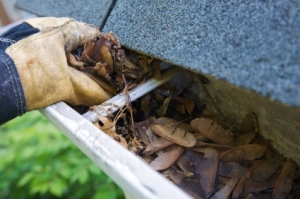
Prepare for freezing temperatures.
• Clean off debris from the roof, gutters and replace loose shingles.
• Ice and snow can weigh down branches, so be sure to remove any that are hanging too close to the house.
• In addition, pipes can freeze in extremely cold weather, which can cause them to rupture. Use an insulating pipe wrap on pipes to keep them functioning in freezing temperatures.
Step 2 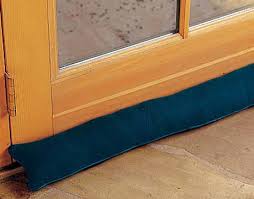
Perform draft tests.
• Drafts can enter a house at a variety of locations. Performing a few simple tests to determine where drafts are entering the home can make a big difference. If a thin piece of cardboard can fit underneath a closed door, heat may be escaping, costing you money.
• To identify trouble spots, wet your finger and move it along the area in question to feel for drafts, or shine a bright flashlight around these areas to see if light shines through.
• Check wall joints, light fixtures, electrical outlets, window and door frames to interior walls, attic doors and ceilings, and plumbing penetrations.
Step 3 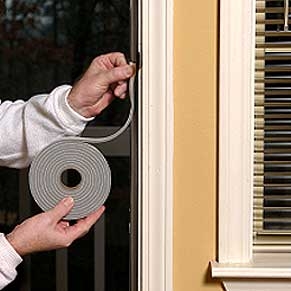
Seal off air leaks.
• Installing additional insulation or window replacements to conserve energy can prove to be expensive and time-consuming.
• For a quick fix, use weather-stripping to fill gaps and minimize air infiltration.
Step 4 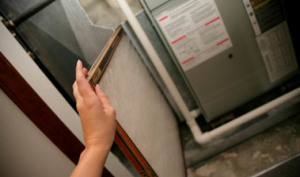
Check your heating system.
• Have a routine check done by a heating professional before the cold weather sets in.
• Vacuum vents and replace furnace filters if needed.
• If you use a fireplace as an alternative heating method, be sure to have it inspected and cleaned for proper efficiency or unsafe conditions.
Step 5 
Insulate windows. Check windows and doors for drafts and efficiency.
• Unknowingly, about 30 percent of a home’s heat escapes through small cracks and holes around windows and under doors. This can translate into a 50-75 percent increase in fuel bills.
• One inexpensive and effective way to insulate is a roll-on window insulation kit, which is easy to install and covers your windows with a transparent film to help keep warm air inside and cold air out. Try window kits, they fit to a variety of window sizes and require no measuring and minimal cutting.
Once the temperatures start dropping, you’ll be glad you performed these quick and easy procedures to help winterize your home. Not only will you save time and money, but your house will feel more comfortable, as well.
Helpful information for Homeowners – Cape Cod Home Inspector – Scott Hunt – SEASIDE HOME INSPECTION offering home inspections on Cape Cod, Martha’s Vineyard, and Southeastern Massachusetts
Is There a Hidden Fire Hazard in Your Home?
Estimates put the number of house fires that can be attributed to lint accumulation in clothes dryers at over 15,000 per year. The flexible ducts made of vinyl or foil present the greatest risk, because both the interior ridges created by the ducts accordion design and the ducts propensity of sagging when not installed properly create greater resistance to air flow. The slower air flow causes lint to get caught inside the duct both on the interior ridges and in any low spots caused by the sagging duct. Over time as lint continues to accumulate the air flow is reduced further to a point where the hot air exhausted through the duct is moving so slow that it raises the temperature high enough in the duct to ignite the accumulated lint.
If your home has flexible vinyl or foil duct replacing it with either a rigid or semi rigid metal duct is a safer alternative. The metal ducts properly installed, not only stay cleaner, but if a fire does start a metal duct may contain the fire.
A clean lint screen and a clean exhaust duct will not only reduce the risk of fire, but will also allow the clothes dryer to operate more efficiently and lower your electric bills.
All exhaust ducts on clothes washers should be cleaned regularly…so add it to your yearly maintenance list.
Helpful information for Homeowners -Cape Cod Home Inspector – Scott Hunt – SEASIDE HOME INSPECTION offering home inspections on Cape Cod, Martha’s Vineyard, and Southeastern Massachusetts



